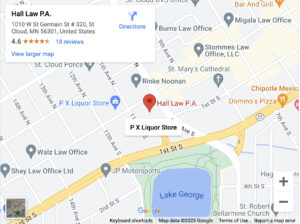
You breach a duty when you fail to perform a duty as required. This might mean doing something you should not have done or failing to do something that you should have done.
To breach a duty you must first have a duty – that is to say, you cannot breach a duty that you never had to begin with. The issue of breach of duty is often the focal point of a personal injury claim.
The Four Legal Elements of a Negligence Claim

Most personal injury claims, such as car accident claims, are negligence claims. “Breach of duty” is one of the four legal elements of a negligence claim. if you prove all four elements of your claim, you qualify for compensation. The four legal elements of a negligence claim are:
- The defendant owed you a duty of care.
- The defendant breached their duty of care.
- You suffered a personal injury.
- The defendant’s breach of their duty of care caused your injury.
You must prove all four of these elements to win. You cannot prove breach of duty until you first establish exactly what duty the defendant owed you. The duty of care can be defined by common sense, or it can be a legal standard. Commercial truck drivers are subject to extensive state and federal regulations, for instance.
The Burden of Proof
The burden of proof is a legal concept that attempts to measure the amount of evidence that you must produce to win your claim. In criminal law, for example, the prosecution must prove the defendant is guilty beyond a reasonable doubt. This is a very difficult burden to meet.
It’s a lot easier in a civil lawsuit. In a personal injury lawsuit for monetary damages, you must prove the defendant liable by a preponderance of the evidence. It is much easier to prove a fact by a preponderance of the evidence than it is to prove it beyond a reasonable doubt.
A preponderance of the evidence simply means the weight of the evidence. As long as your evidence even slightly outweighs the evidence submitted by the defendant, you win.
Examples of Breaches of the Duty of Care
Following are some examples of how a defendant might breach their duty of care:
- A doctor fails to order lab tests after a patient complains of certain symptoms.
- A truck driver failed to properly secure their cargo on the back of a truck.
- A bartender served an obviously intoxicated customer who later caused a DUI accident.
- A trucking company hired a driver with two previous DUIs on their driving record.
- A restaurant owner or their employee failed to clean up a spill on the floor, causing a customer to fall and break their hip.
- A factory produces defective merchandise that later injures someone.
- A dog owner allows their dog to roam free, knowing that the dog has aggressive tendencies.
Is easier to prove breach of duty if the defendant violated a statute or regulation. Nevertheless, a dependent can breach their duty of care without breaking the law per se. Driving the speed limit during a blizzard, for example, might constitute a breach of the duty of care even if it is not an obvious violation of the law.
Proving Breach of Duty
Being breach of duty in a personal injury case can be quite difficult. The victim will typically introduce the following types of evidence to prove their case:
- Expert witness testimony.
- Eyewitness testimony.
- Medical records.
- Piece of statutes and regulations.
The dependent might also introduce evidence to refute the victim’s claim that they breached their duty of care. Alternatively, they might agree with the victim’s version of events but claim that the defendant’s actions did not constitute breach of duty. Pennsylvania law allows many possible defenses to a negligence claim. These defenses matter just as much at the settlement table as they do during a trial.
Comparative Fault: The Wild Card in the Deck
What happens if both parties reach their duties to each other? This state of affairs occurs more often than you might think. When it does, Minnesota courts apply a legal concept known as “comparative fault.”
At trial, a judge will assign each party a percentage of fault for the accident. Any party whose percentage of fault totals more than 50% will receive no compensation at all. A party whose percentage of both is less than 51% will receive a percentage of their losses minus their own percentage of fault.
If you lost $100,000, for example, and if your percentage of fault was 25%, you would lose $25,000. That would leave you with a total of $75,000 that the defendant would have to pay you.
A Minneapolis Personal Injury Lawyer Can Help You Maximize the Value of Your Claim
Personal injury claims can get surprisingly complex and deceptive. Even if you don’t think your claim is worth much, you should still consult a Minneapolis personal injury attorney. You might just find that your claim is worth a lot more than you think it is. If it is, then you are probably going to need a personal injury lawyer to help you resolve it. Contact or call Hall Law Personal Injury Attorneys to schedule a free consultation with an experienced Minneapolis personal injury attorney at (800) 292-1979.



